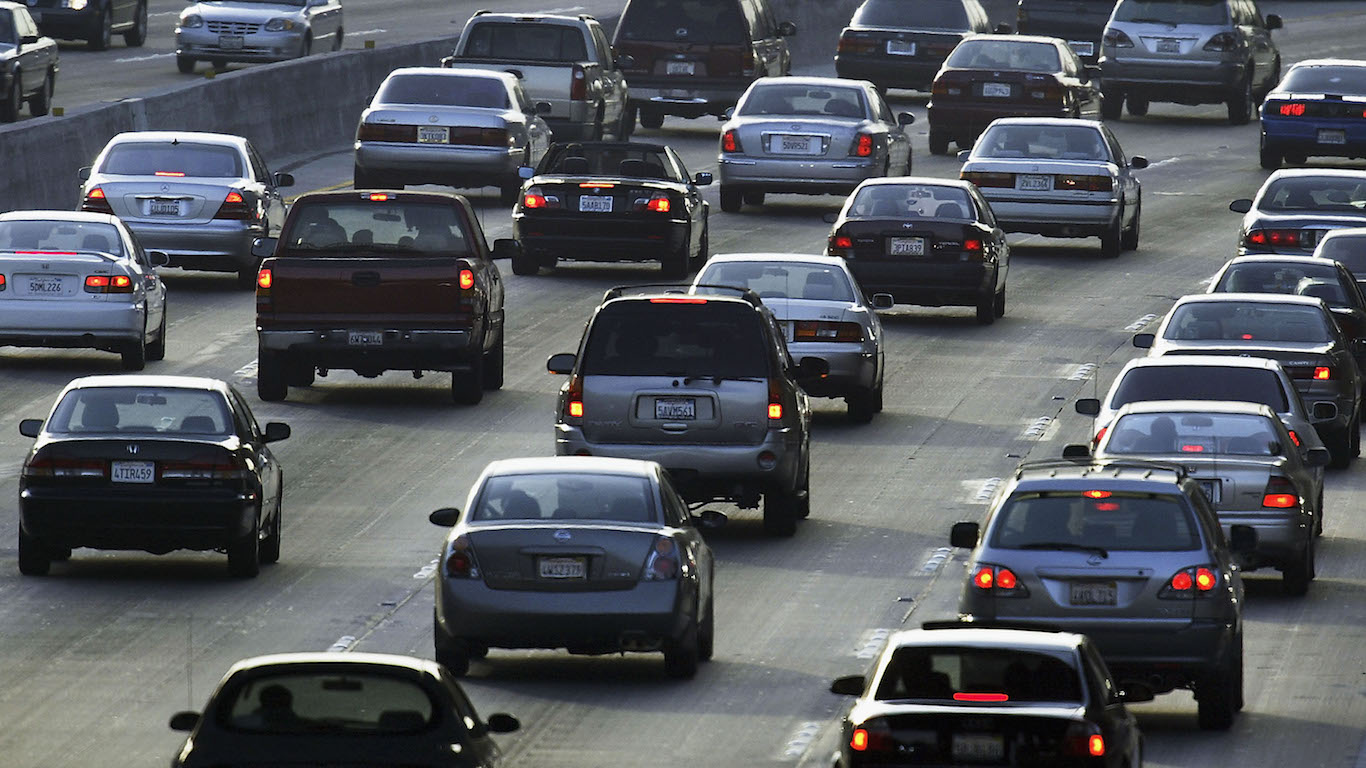Cars and Drivers
How Higher Interest Rates and Tighter Credit Are Adding to Peak Auto Fears

Published:
Last Updated:

While the notion of “Peak Auto” is not a new observation about the U.S. domestic car buying trends, there is another source of pressure that has not garnered as much as attention despite how it should seem rather obvious. The housing demand and affordability has withered under the rising interest rate climate, but now it seems that rising interest rates and a tighter credit environment are starting to show up in impacting car sales.
New data from Edmunds is signaling that tighter credit conditions continue to weigh on potential car buyers. It’s not just the higher interest rates either. It’s the loan requirements. As a reminder, it was not all that long ago that buying a car went from easy as can be to quite difficult with the impacts of the recession. But with low interest rates, many cars were sold with little or no real interest at all up until the last couple of years.
The annual percentage rate on new cars being financed was an average of 6.2% in October. That is up 1.3% from a year ago and is 2 full percent higher than it was five years ago. Maybe 6.2% doesn’t sound too bad on the surface, but Edmunds showed that this was the highest level going all the way back January 2009.
Those zero-rate car loans are also in the rear view mirror now due to higher interest rates. Edmunds showed that zero percent finance loans fell in October to their lowest level since 2007. That was down to 3.8%of all loans in October — down from 7.5% in 2017 and down from 7.8% five years ago.
Edmunds also went on to note that high interest rates have been the driving factor biting into the wallets of car shoppers. The group noted how a typical new-car buyer will now have to pay $1,316 more in interest over the life of a car loan versus had they bought the same car in October of 2017. Jeremy Acevedo, Edmunds’ manager of industry analysis, said of the rise in rates:
We haven’t seen interest rates hit the 6 percent mark in nearly 10 years, and zero percent finance loans have been cut down by nearly a third of where they were in 2016. It’s getting harder and harder for shoppers to afford a new car, and if the economy starts to slip, we’re at a point now where we really could start to see some significant impacts in the auto market.
Access to cheap credit has been a key factor in the industry’s post-recession sales rally and transition toward pricier trucks and SUVs. Now that we’re entering a time when transaction prices are also booming, these rising rates compromise affordability and will likely begin to dampen demand moving forward.
Edmunds had previously noted that the average monthly payment on a new car hit an all-time high of $531 as recently as August 2018. They also showed how much longer the average car loan has started to extend for borrowers. According to that report on October 1:
It reflects a trend of people preferring costlier SUVs, along with a gradual rise in new-vehicle prices. To cope with the reality of high monthly payments, many people are taking out longer auto loans… The most common term currently is for 72 months, with an 84-month loan not too far behind. It’s been creeping up: 10 years ago, the most common new-car loan term was 60 months, followed closely by 72 months.
While Edmunds warned that borrowers were trying to get a good interest rate, they were extending beyond the traditional 5-year loans to get the payments cheaper. Also a month earlier, Edmunds showed the higher interest cost for a 60-month loan versus a 72-month loan as follows:
The average amount financed for a new car in 2018 was $31,070, with an average interest rate of 3.2 percent for a 60-month loan. The finance charges over the life of the loan would be $2,593, giving you a monthly payment of $561, which is a considerable chunk of money. It’s easy to see why someone would opt for a longer loan.
For our new car with the amount financed of $31,070, the monthly payment for the 72-month loan would be about $528. That seems like an improvement over 60 months, until you see the finance charges: $6,962 over the life of the loan. That’s more than two and a half times the interest you’d pay for a 60-month loan.
Most of the time around “peak auto” has been factored primarily on actual demand, ride sharing, public transportation and other non-interest factors. Now the new car industry is starting to feel the heat from Jerome Powell’s march forward and onward to raise interest rates back up to a neutral level. Car-makers better hope that Mr. Powell and the voting members of the FOMC don’t actually overshoot that neutral rate — as some have suggested may occur.
Thank you for reading! Have some feedback for us?
Contact the 24/7 Wall St. editorial team.